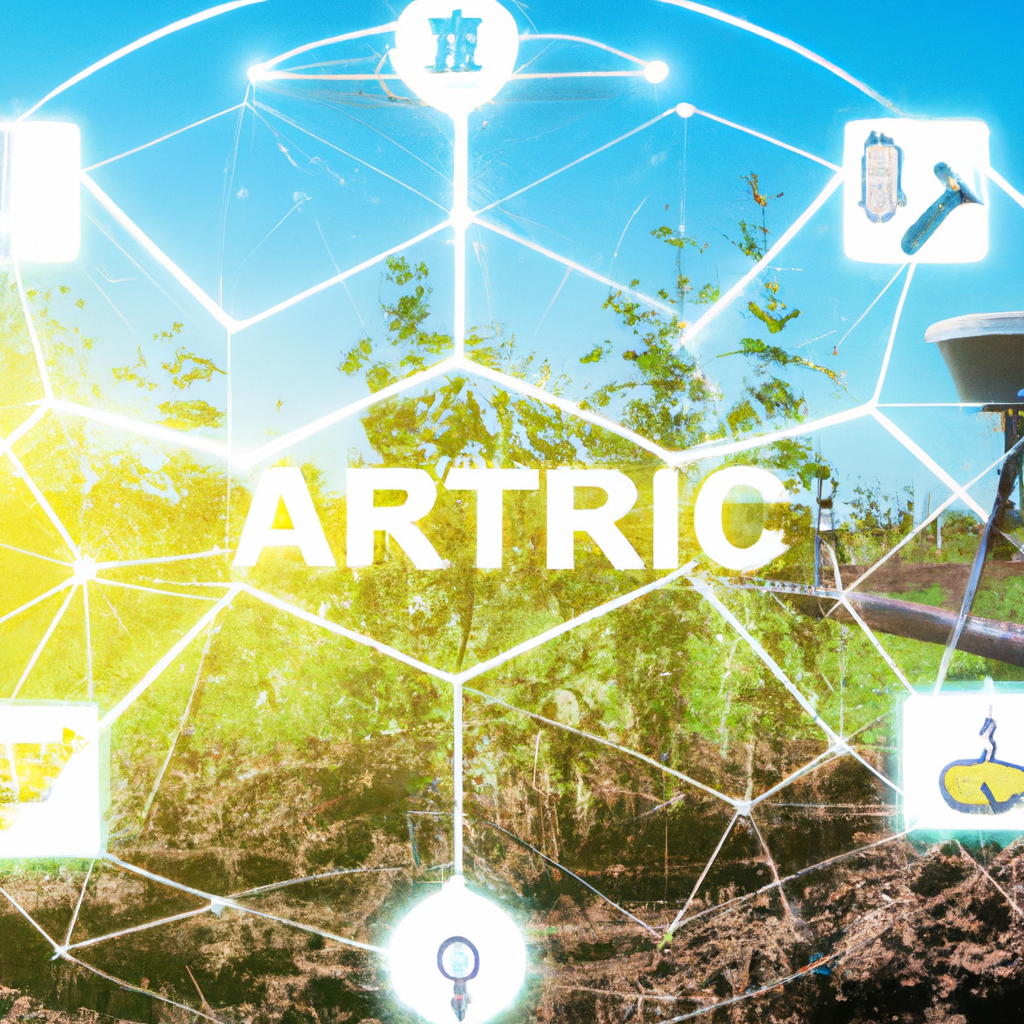-
Table of Contents
- Introduction
- How AI Tools are Revolutionizing the Agriculture Industry
- Exploring the Benefits of AI-Powered Precision Agriculture
- The Impact of AI on Livestock Management and Animal Welfare
- The Role of AI in Automating Farm Tasks and Increasing Efficiency
- The Potential of AI-Driven Smart Farming for Sustainable Agriculture
- Conclusion
“Harvesting the Power of AI to Grow a Brighter Future in Agriculture”
Introduction
The use of Artificial Intelligence (AI) tools in agriculture is rapidly becoming a reality. AI tools are being used to increase crop yields, reduce costs, and improve the efficiency of farming operations. AI tools are also being used to monitor and analyze crop health, soil conditions, and weather patterns. As AI technology continues to evolve, the potential for AI tools to revolutionize the agricultural industry is immense. This article will explore the current and future applications of AI tools in agriculture, and how they can be used to improve the efficiency and profitability of farming operations.
How AI Tools are Revolutionizing the Agriculture Industry
The agriculture industry is undergoing a revolution, and it’s all thanks to the power of artificial intelligence (AI). AI tools are transforming the way farmers manage their crops, monitor their land, and make decisions about their operations.
AI tools are helping farmers make more informed decisions about their crops. For example, AI-powered analytics can help farmers identify which crops are most likely to thrive in their environment, and which ones are more likely to fail. This helps farmers make better decisions about which crops to plant and when. AI can also help farmers monitor their crops in real-time, alerting them to potential problems before they become too serious.
AI tools are also helping farmers manage their land more efficiently. AI-powered drones can be used to survey large areas of land quickly and accurately, providing farmers with detailed information about their land. This information can be used to identify areas that need more attention, or to plan out irrigation and fertilization schedules.
Finally, AI tools are helping farmers make better decisions about their operations. AI-powered analytics can help farmers identify trends in their data, such as changes in crop yields or weather patterns. This information can be used to make more informed decisions about how to manage their operations.
The agriculture industry is being revolutionized by AI tools, and the results are already being seen. Farmers are able to make more informed decisions about their crops, manage their land more efficiently, and make better decisions about their operations. AI is transforming the way farmers do business, and it’s only going to get better from here.
Exploring the Benefits of AI-Powered Precision Agriculture
Welcome to the world of precision agriculture! This exciting new technology is revolutionizing the way farmers manage their crops and livestock. With the help of artificial intelligence (AI), precision agriculture is helping farmers increase yields, reduce costs, and improve sustainability.
In this article, we’ll explore the benefits of AI-powered precision agriculture and how it can help farmers maximize their profits.
First, let’s look at how AI is used in precision agriculture. AI-powered precision agriculture uses sensors, drones, and other technologies to collect data about the environment, soil, and crops. This data is then analyzed by AI algorithms to identify patterns and trends. This helps farmers make informed decisions about when and how to fertilize, irrigate, and harvest their crops.
The use of AI in precision agriculture also helps farmers reduce costs. By using AI to monitor and analyze data, farmers can identify areas where they can save money. For example, AI can help farmers identify areas where they can reduce water usage or identify areas where they can reduce fertilizer use. This helps farmers save money while still producing high-quality crops.
AI-powered precision agriculture also helps farmers increase yields. By using AI to monitor and analyze data, farmers can identify areas where they can increase yields. For example, AI can help farmers identify areas where they can increase fertilizer use or identify areas where they can increase irrigation. This helps farmers maximize their yields while still producing high-quality crops.
Finally, AI-powered precision agriculture helps farmers improve sustainability. By using AI to monitor and analyze data, farmers can identify areas where they can reduce their environmental impact. For example, AI can help farmers identify areas where they can reduce water usage or identify areas where they can reduce fertilizer use. This helps farmers reduce their environmental impact while still producing high-quality crops.
In conclusion, AI-powered precision agriculture is revolutionizing the way farmers manage their crops and livestock. By using AI to monitor and analyze data, farmers can reduce costs, increase yields, and improve sustainability. This helps farmers maximize their profits while still producing high-quality crops.
The Impact of AI on Livestock Management and Animal Welfare
The impact of artificial intelligence (AI) on livestock management and animal welfare is undeniable. AI has the potential to revolutionize the way we care for animals, from the way we monitor their health to the way we manage their diets.
AI can be used to monitor the health of animals, detect signs of illness, and alert farmers to potential problems. AI-powered sensors can be used to track the temperature, humidity, and other environmental factors in a barn or pasture, allowing farmers to make sure their animals are comfortable and healthy. AI can also be used to monitor the behavior of animals, helping farmers identify signs of distress or illness.
AI can also be used to improve the diets of animals. AI-powered algorithms can analyze the nutritional needs of animals and create customized diets that are tailored to their individual needs. This can help farmers ensure that their animals are getting the right balance of nutrients and help them avoid overfeeding or underfeeding.
Finally, AI can be used to improve animal welfare. AI-powered cameras can be used to monitor animals for signs of distress or abuse, and AI-powered algorithms can be used to detect patterns of behavior that may indicate a problem. AI can also be used to track the movements of animals, helping farmers ensure that they are not being overworked or mistreated.
Overall, AI has the potential to revolutionize the way we care for animals. By monitoring their health, managing their diets, and improving their welfare, AI can help farmers ensure that their animals are healthy and happy.
The Role of AI in Automating Farm Tasks and Increasing Efficiency
AI is revolutionizing the way we farm. By automating tedious and time-consuming tasks, AI is helping farmers increase efficiency and reduce costs.
AI can be used to monitor crops and soil conditions, detect pests and diseases, and optimize irrigation and fertilization. AI-powered sensors can detect changes in soil moisture, temperature, and other conditions, allowing farmers to adjust their irrigation and fertilization schedules accordingly. AI can also be used to detect pests and diseases, alerting farmers to potential problems before they become serious.
AI can also be used to automate tedious tasks such as weeding and harvesting. AI-powered robots can be used to identify and remove weeds, freeing up farmers to focus on other tasks. AI-powered robots can also be used to harvest crops, reducing the amount of time and labor required.
AI can also be used to optimize crop yields. AI-powered algorithms can analyze data from sensors and other sources to identify areas of the field that are not producing as much as they could. This data can then be used to adjust irrigation and fertilization schedules to maximize yields.
AI is also being used to improve the accuracy of forecasting. AI-powered algorithms can analyze data from weather stations, satellites, and other sources to predict weather patterns and other conditions that could affect crop yields. This data can then be used to inform decisions about when to plant, irrigate, and harvest.
In short, AI is revolutionizing the way we farm. By automating tedious tasks and optimizing crop yields, AI is helping farmers increase efficiency and reduce costs.
The Potential of AI-Driven Smart Farming for Sustainable Agriculture
The potential of AI-driven smart farming for sustainable agriculture is immense. Smart farming, also known as precision agriculture, is a farming management concept that uses modern technology to increase crop yields and reduce environmental impact. AI-driven smart farming is a subset of this concept that uses artificial intelligence (AI) to automate and optimize farming processes.
AI-driven smart farming has the potential to revolutionize the way we farm. By using AI to monitor and analyze data from sensors, drones, and other sources, farmers can gain a better understanding of their crops and the environment. This data can be used to optimize irrigation, fertilization, and pest control, as well as to identify areas of the farm that need attention. AI-driven smart farming can also help farmers make more informed decisions about when to plant, harvest, and market their crops.
AI-driven smart farming can also help farmers reduce their environmental impact. By using AI to monitor and analyze data, farmers can identify areas of their farm that are most vulnerable to climate change and other environmental threats. This data can be used to develop strategies for reducing water and fertilizer use, as well as for improving soil health. AI-driven smart farming can also help farmers identify areas of their farm that are most suitable for growing certain crops, allowing them to make more sustainable choices.
Finally, AI-driven smart farming can help farmers increase their yields. By using AI to monitor and analyze data, farmers can identify areas of their farm that are most suitable for growing certain crops, allowing them to make more informed decisions about when to plant, harvest, and market their crops. AI-driven smart farming can also help farmers identify areas of their farm that are most vulnerable to pests and diseases, allowing them to take preventive measures to protect their crops.
In short, AI-driven smart farming has the potential to revolutionize the way we farm and help us achieve sustainable agriculture. By using AI to monitor and analyze data, farmers can gain a better understanding of their crops and the environment, reduce their environmental impact, and increase their yields. With the right tools and strategies, AI-driven smart farming can help us achieve a more sustainable and productive future for agriculture.
Conclusion
The Future of AI Tools in Agriculture is very promising. AI tools are already being used to increase crop yields, reduce costs, and improve the efficiency of farming operations. As AI technology continues to develop, it will become even more powerful and useful in the agricultural sector. AI tools will be able to provide farmers with more accurate and timely data, allowing them to make better decisions and increase their profits. AI tools will also help farmers to better manage their resources and reduce their environmental impact. In the future, AI tools will be an integral part of the agricultural industry, helping farmers to maximize their yields and profits.





